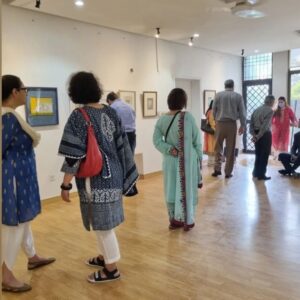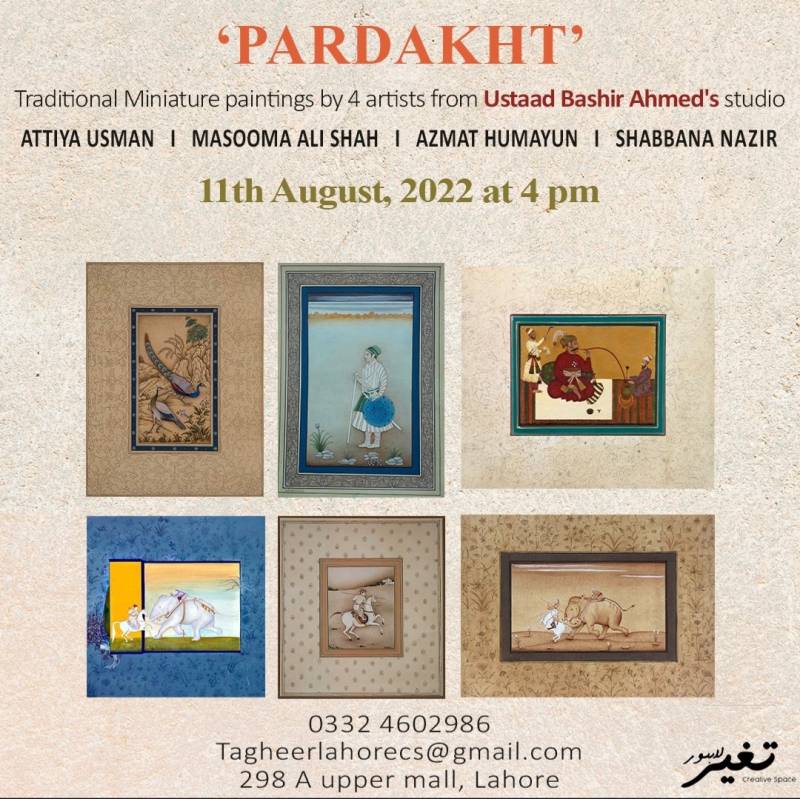
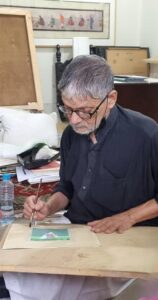
Ustad Bashir Ahmed is a living legend. The previous head of the Fine Arts department and architect of the curriculum of the bachelor’s degree in miniature painting for the prestigious National College of Arts, he teaches miniature painting privately. The works on display are by four of his students – Shabana Nazir, Attiya Usman, Masooma Ali Shah and Azmat Humayun.
“Pardakht means to look after. Basically in Pardakht the different art forms, the varying techniques that miniature painting uses, this exhibition is a means of preserving and looking after them for the next generations,” says Azmat.
“The title of the exhibition was inspired by the traditional process of rendering details in miniature painting called ‘Pardakht’. My current body of work is an amalgamation and re-visitation of these techniques. The whole process of painting, displaying and reaching out to people through our art has been quite thrilling especially after covid-19,” says Masooma.
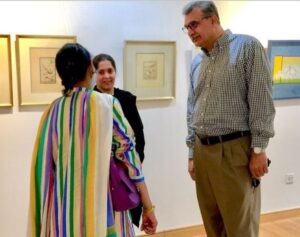
As you walk from one painting to another, oscillating between Persian and Mughal worlds, Nashmia talks about the varying techniques. This show is an exhibition of the fine skill of painting consisting of sia qalam, neem rang and gad rang on handmade paper called wasli. Each painting is made by a brush made from squirrel hair. The hours spent on each painting are long, arduous and requires bottomless pits of focus and patience. Shabana’s work is a reflection of 2o years of dedication to miniature painting as Ustad Bashir Ahmed's shagird.
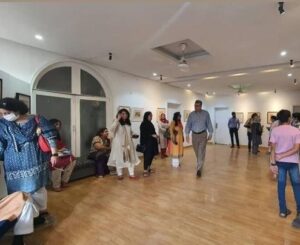 “Pardakht reflects the essence of work I do as a miniature artist. The paintings are made by using water based colours and done in multiple steps spread over weeks and months. First a splash of water, then a wash of the colours mixed in safaida. After that the texture of the illustration is slowly built by fine rendering. The paintings truly depict traditional art which is used to carry out in the Mughal era by court artisans,” says Attiya.
“Pardakht reflects the essence of work I do as a miniature artist. The paintings are made by using water based colours and done in multiple steps spread over weeks and months. First a splash of water, then a wash of the colours mixed in safaida. After that the texture of the illustration is slowly built by fine rendering. The paintings truly depict traditional art which is used to carry out in the Mughal era by court artisans,” says Attiya.There is no denying that the arts have suffered badly in Pakistan due to internal, regional and international geo-politics. The loss of artists and closure of cultural spaces ate away at the city’s natural environment which once buzzed with activities that did not just keep ancient art practices alive but also gave the country its identity globally.

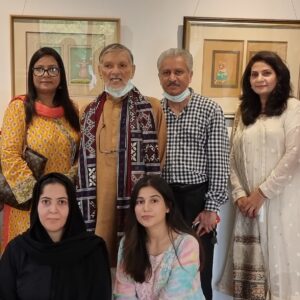
After a very long time, for a brief moment in time, one felt one was transported to that Lahore and one could understand why the city was once considered the jewel of South Asia. Between the Ustaad, the artists and Nashmia, an old familiar heartbeat could be heard, the sound of life coming back right there in the comforting cocoon known as Tagh'eer Lahore.
The exhibition started on August 11th and will be on till August 21st 2022.
